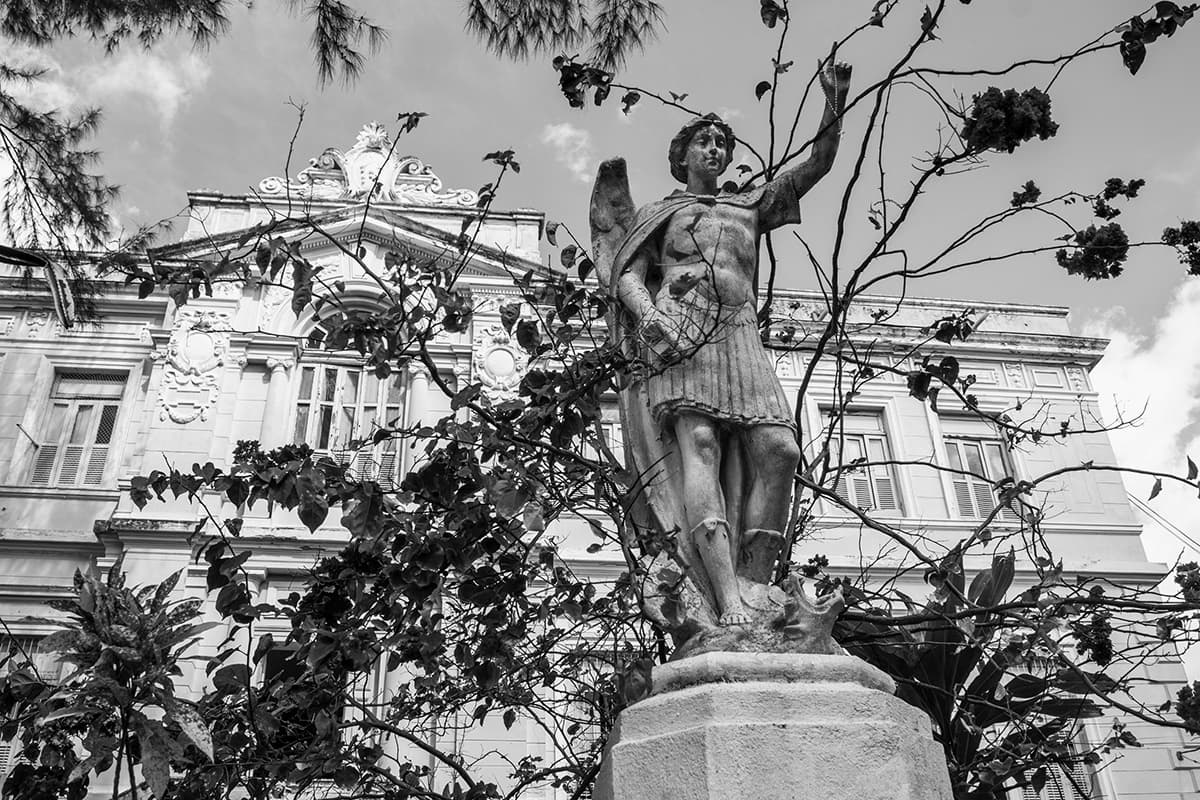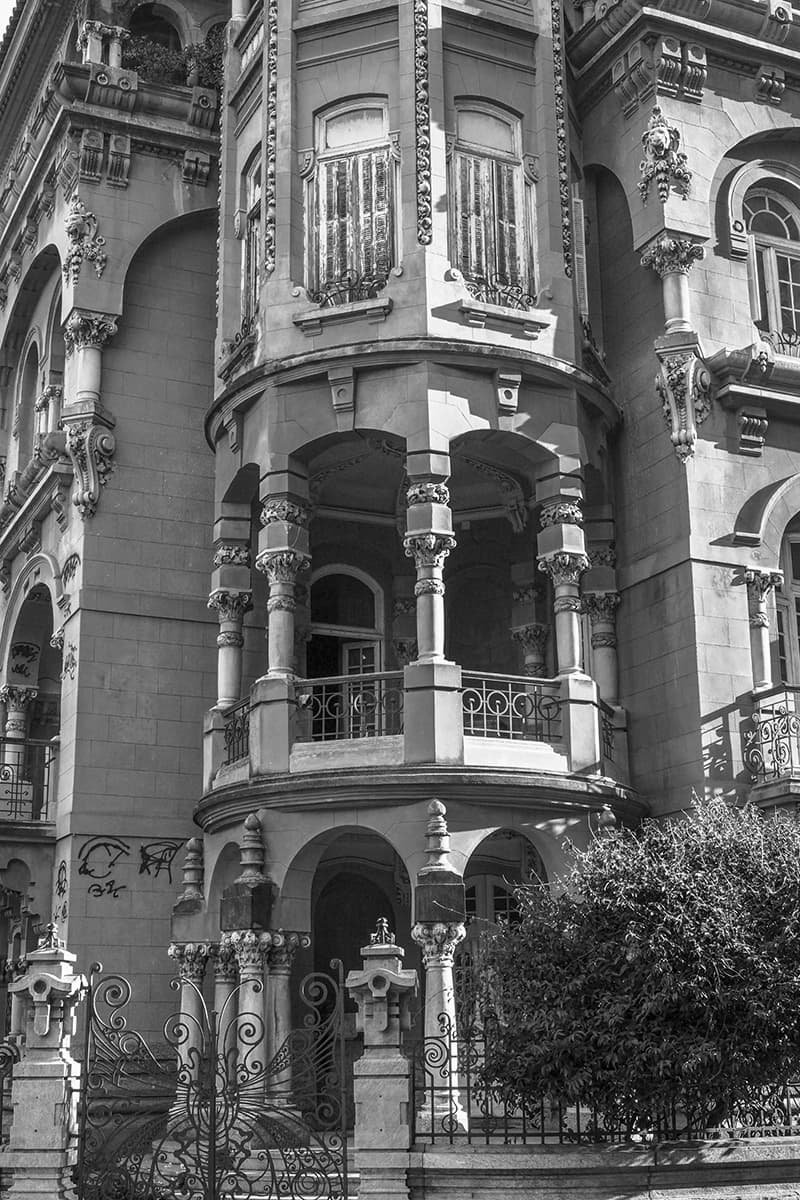Photographic research on the Italian influence on the Carioca landscape and the Italian presence in the Soteropolitan landscape are themes of the two exhibitions held by the Italian Institute of Culture
Of the day 9 august to 9 October, the Palace of the Arts, former residence of Commander Bernardo Martins Catharino, in Salvador, will host the two “Dell’Architettura” exhibitions, each with a different approach. on the ground floor, “The Italian Presence in the Soteropolitan Landscape”; no top pavement, “Photographic investigation into the Italian influence on the Rio landscape”, both performed by Italian Institute of Culture.
Of Architecture – The Italian Presence in the Soteropolitan Landscape
In the first three decades of the last century, the soteropolitan landscape was indelibly transformed by a group of italian immigrants: engineers, architects, builders, decorators, painters and sculptors, from the most diverse Italian regions, from Calabria to Tuscany, from Basilicata to Lazio, from Piedmont to Sicily.
These characters played a key role in the urban modernization of Salvador, contributing to the diffusion of a new architectural language: the eclecticism. Characterized by the profusion of ornaments both on the facades and in the interiors., contrasting with the antiquity of the colonial townhouses that still predominated in Salvador, Eclecticism was, as noted by Italian researcher Luciano Patetta, the first architectural expression to have achieved true global diffusion, spreading through contexts as different as the capitals of the new independent countries of South America, as Rio de Janeiro, Buenos Aires and Montevideo; the then English colonies, french, Dutch and Portuguese in Africa and Asia; or even the eastern nations that were beginning to open up to the West, like Japan and Turkey.
The Eclecticism also incorporated into the architecture, for the first time, sophisticated iron and glass elements made in England, Belgium, Germany, France or United States, as we can observe, for example, in the monumental staircase of the Rio Branco Palace or in the elegant lateral marquise of the Palacete do Comendador Bernardo Martins Catharino.
Among these characters, the first Italians to arrive in Salvador were artists, like the sculptor Pasquale De Chirico, natural de Potenza, and the Florentine painter Oreste Sercelli, who arrived here, coming from São Paulo, around 1905 to work on the reconstruction of the old Faculty of Medicine, in Terreiro de Jesus, at the invitation of engineer Theodoro Sampaio, director of the work. The construction professionals, on the other hand, only began to settle in Salvador in the early 1990s. 1910: Battista Rossi in 1911, from Rio de Janeiro; Alberto Borelli the following year, coming from São Paulo; Filinto Santoro in 1913, after working in Rio de Janeiro, Victory, Manaus and Belém. These professionals were called “architects”, although only a few, como Santoro and Giulio Conti, had a degree in engineering and most did not have a higher education, being, actually, foremen or master builders, the equivalent of our master builders.
The work that marked the beginning of this process in Salvador is the mansion of Comendador Bernardo Martins Catharino, current Palace of the Arts. to design it, the owner brought, from then capital, o "Constructor Architect" Battista Rossi, who would consolidate himself as the preferred designer of the new Bahian bourgeoisie. Santoro, on the other hand, was the author of the main public works of the decades of 1910 and 1920.
Other Italian designers and builders working in Salvador in this period, like Alberto Borelli, Giulio Conti and Michele Caselli, are characters about whom very little information is available.. It is not known whether they resided here or in other capitals., which region of Italy they came from and, In so many cases, not even if they had any academic training.
This photographic exhibition, promoted by Italian Cultural Institute of Rio de Janeiro, aims to shed light on Santoro's production, Rossi, Conti, Borelli, Chirico, Rebecchi, Caselli and many others who contributed to modernizing our city and whose features still mark our urban landscape.. And it is even more representative that this exhibition takes place at Palacete Catharino, work symbol of this production.
Nivaldo Andrade, curator
Dell’Architettura – Photographic investigation into the Italian influence on the Rio landscape
When people talk about the architecture of Rio de Janeiro, a lot is said about the French influence on the city's buildings.. But what do works like Moinho Fluminense have in common?, in Port Area; the Red Cross Hospital, at the Center, and the current EAV headquarters, no Parque Lage? These are examples of the legacy left by Italian architects in the landscape of Rio. The Italian influence in our architecture is as vast as that of France. or greater, if we consider the fact that architects like Grandjean de Montigny (1776–1850), for example, carried out their studies – or part of them – in Rome. There is a lot of Italy in Rio and an exhibition will shed light on it. Dell’Architettura – Photographic investigation into the Italian influence on the Rio landscape brings 37 black and white photographic panels of buildings that have Italy in their DNA. The images are from the photographer, teacher and visual artist Aristides Corrêa Dutra, who signs the curatorship and texts of the show together with the director of the Italian Institute of Culture of Rio de Janeiro, Livia Raponi.
About the buildings mentioned
Moinho Fluminense is a jewel created by the Calabrian António Januzzi (1853–1949), also responsible for the construction of the Methodist Church of Catete. The Red Cross Hospital is the work of Pietro Campofiorito (1875–1945), who was born in Rome and ended his life in Niterói. The EAV headquarters, no Parque Lage, was built by the Sardinian Mario Vodret (1893–1948) as a gift from businessman Henrique Lage (1881-1941) woman, lyrical singer Gabriella Besanzoni Lage (1888-1962). These Italian architects are just three of the greats whose works make up Dell’Architettura – Photographic investigation into the Italian influence on the Rio landscape. Of this total, 11 are italian. The list includes three Europeans – the Portuguese José da Costa e Silva (1747–1819), Frenchman Grandjean de Montigny (1776–1850) e o ukranian Gregori Warchavchik (1896–1972). The Brazilian presence is that of Rino Levi from São Paulo (1901-1965), author of Hospital General do Nascimento Vargas (present Federal Hospital of Bonsucesso), and that of Carioca Olavo Redig de Campos, author of the house that belonged to banker Walther Moreira Salles (1912-2001) and which today houses the Instituto Moreira Salles, in Gávea.
Italy was not yet the nation we know today. (their unification was concluded in 1870), when his architecture began to win the world. More precisely, from the expansion of the The Roman Empire by Europe, Egypt and part of the East. The arrival in Brazil of architects from the states that make up Italy today takes place mainly from 1843, on the occasion of the marriage of Dom Pedro II with Princess Teresa Cristina, of the Kingdom of the Two Sicilies. However, the influence of this architecture is noticeable here already in the First Reign, in the traces Greco-Romans, mannerists and baroque colonial architecture. It is a long-lasting influence., that still perpetuates, the period from Classicism to Modernism being more fruitful, going through styles like art noveau(called in Italy of Stile Liberty) and the art Deco. This is the clipping Dell’Architettura – Photographic investigation into the Italian influence on the Rio landscape. O título "Dell’Architettura" vem do "I four books on architecture ", written and illustrated by Renaissance master Andrea Palladio (1508-1580), and one of the maximum references in the expansion of classicism around the world.
Sign up to receive Event News
and the Universe of Arts first!
Para Livia Raboni, director of IIC Rio and also curator of the exhibition, the show makes, “Through the research and images made by Aristides, we come across, with keen interest, with a Rio de Janeiro much more Italian than one thinks, considered in the buildings and monuments of the city the breadth and diffusion of the influence of architects, engineers, decorators, italian specialist masters, or trained in Italy”.
Service:
Dell’Architettura – Photographic investigation into the Italian influence on the Rio landscape
Artist: Aristides Corrêa Dutra
Curation and texts: Livia Raponi and Aristides Corrêa Dutra
Of Architecture – The Italian Presence in the Soteropolitan Landscape
Artist: Manuel Sa
Curation and texts: Nivaldo Andrade
Realization: Italian Cultural Institute in Rio de Janeiro
The exhibitions have the support of the Consulate General of Italy in Rio de Janeiro, Embassy of Italy in Brazil and UIA Rio 2021
Opening: day 9 August, às 18h30
Local: Palacete das Artes
Address: Rua da Graça, 284, Graça, Salvador, Bahia.
Visitation: 10 august to 9 October
Time: Tuesday to Saturday, the 1:00 pm to 6:00 pm
Entrance: free
Rating: free











